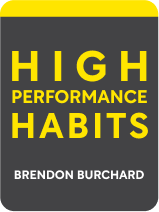

This article is an excerpt from the Shortform book guide to "High Performance Habits" by Brendon Burchard. Shortform has the world's best summaries and analyses of books you should be reading.
Like this article? Sign up for a free trial here .
What is the difference between internal and external motivation? What are some examples of each?
By definition, internal motivation comes from within the person (e.g. feelings, values, and goals). In contrast, external motivation comes from outside forces (e.g. duties and deadlines).
Keep reading for more about internal and external motivation.
Two Forces of Drive: Internal and External Motivation
Drive is the force that pushes you to perform at your best. It helps you stay on track through even the most difficult challenges. Drive can be derived from both internal and external motivation.
Internal Motivational Forces
Internal motivational forces are the feelings, values, and goals that drive you. They create the feeling of satisfaction when you’ve accomplished a goal, and the feeling of frustration when you sense you’re underperforming. They come from your internal desire to better yourself and gain mastery within your field. Internal forces are divided into two categories: identity and obsession.
Identity
Identity refers to the need to hold yourself to a high standard of excellence. High performers tie their identity to their performance, constantly self-monitoring and looking for opportunities to improve their work. When they achieve success, they feel validation and pride. However, when they underperform, they recognize their failings and commit to stronger performance moving forward.
Obsession
Obsession refers to the need to understand and master a topic. High performers obsess over their field of choice, pouring hours of research, practice, and discussion into their craft. They don’t need an incentive or reward to commit to their work. Instead, they feel an intrinsic need to learn as much as they can and put their understanding into practice.
External Motivational Forces
External motivational forces are factors outside of a person’s control that drive them to perform well. Some equate these forces to “pressure.” However, while these forces do create a degree of pressure, they shouldn’t be viewed as negative. These forces are divided into two categories: duty and urgency.
Duty
Duty is an obligation to someone or something outside of yourself. This could be anything from an obligation to a significant other to a sense of responsibility for an organization. For example, a high-performing Marine feels a sense of duty to their country. Because of this, they’ll make sure that their actions reflect their desire to serve, even if that means sacrificing almost everything.
Urgency
Urgency refers to an obligation to a hard deadline, rather than a soft deadline:
- Soft deadlines are deadlines that don’t carry consequences. For example, if you tell yourself that you’re going to finish a puzzle by Friday but fail to do so, the ramifications won’t be severe.
- Hard deadlines, on the other hand, are deadlines that carry consequences. For example, if your boss tells you he needs your report on his desk by 2 p.m. for an important meeting, missing that deadline would lead to serious problems.

———End of Preview———
Like what you just read? Read the rest of the world's best book summary and analysis of Brendon Burchard's "High Performance Habits" at Shortform .
Here's what you'll find in our full High Performance Habits summary :
- The 6 habits that high performers have
- How being a high performer is about more than one big achievement
- The 3 traps that can foil you, even if you're a high performer






